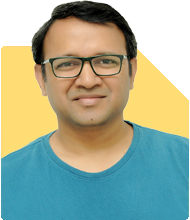Ramalingam Kalirajan |10894 Answers |Ask -Follow
Mutual Funds, Financial Planning Expert - Answered on Jul 13, 2024
He has an MBA in finance from the University of Madras and is a certified financial planner.
He is the director and chief financial planner at Holistic Investment, a Chennai-based firm that offers financial planning and wealth management advice.... more

I m 42 years old having 5.25 CR of mutual funds and including 2 PMS , want to work till max 52, so next 10 years, i need 25 CR of my corpous for retirement , i am having a sip of 4 lakhs per month, what you suggest what extra should i do to make it happen in 8 years
Let’s break down the approach to achieve your goal, considering the current assets, investments, and strategies you might need to employ.
Current Investments and Strategy
Mutual Funds and SIPs
You already have a significant investment in mutual funds. Mutual funds are a reliable way to grow wealth over time due to their diversified nature and professional management. However, it is crucial to assess whether the current funds align with your risk tolerance and goals.
Your SIP of Rs. 4 lakhs per month shows strong commitment. SIPs help in averaging out market volatility and providing disciplined investment.
Portfolio Management Services (PMS)
PMS offers personalized investment solutions tailored to your financial goals. However, PMS typically involves higher fees compared to mutual funds. It’s important to ensure that the returns justify these costs.
Enhancing Your Investment Strategy
Assessing Risk Tolerance
At 42, with a goal to retire by 52, you still have a moderate investment horizon. It’s essential to balance between growth and capital preservation. Consider diversifying your investments further into mid-cap and small-cap funds for potentially higher returns, but be mindful of the associated risks.
Active vs. Passive Management
You currently hold active funds through your mutual funds and PMS. Active management can potentially offer higher returns as fund managers actively seek to outperform the market. This is crucial in your case, given the aggressive target you have set.
Disadvantages of Index Funds
Index funds simply replicate market indices and do not aim to outperform. They lack flexibility in volatile markets. For your goal, actively managed funds can be more suitable as they aim for higher returns and adapt to market conditions.
Reviewing Direct Funds
Direct mutual funds offer lower expense ratios as they do not involve distributor commissions. However, the disadvantage is the lack of advisory services. For high-stakes goals like yours, having a Certified Financial Planner (CFP) can provide valuable insights and adjustments to your portfolio.
Additional Investment Avenues
Equity and Equity-related Investments
Equities have the potential for high returns but come with higher risk. Given your investment horizon, allocating a higher portion of your portfolio to equities could be beneficial. Ensure a mix of large-cap, mid-cap, and small-cap equities to balance risk and returns.
Debt Instruments
While equities can offer higher returns, including debt instruments in your portfolio can help in balancing the risk. Consider investing in high-quality corporate bonds or debt mutual funds. These provide regular income and are relatively safer.
Gold and Commodities
Allocating a small percentage of your portfolio to gold or commodities can provide a hedge against market volatility. Gold has historically maintained its value over time and can be a safe investment during economic downturns.
Regular Portfolio Review and Rebalancing
Importance of Monitoring
Regularly review your portfolio to ensure it aligns with your goals. Market conditions change, and your portfolio should adapt accordingly. A CFP can help you with periodic reviews and necessary adjustments.
Rebalancing
Rebalancing your portfolio ensures you maintain the desired asset allocation. If equities outperform and grow beyond the intended allocation, selling a portion and reinvesting in underperforming assets can help maintain balance and manage risk.
Tax Planning
Efficient Tax Strategies
Investments in mutual funds and other instruments have tax implications. Equity mutual funds held for over a year qualify for long-term capital gains tax benefits. Understanding and planning for these can help in maximizing returns.
Tax-efficient Withdrawals
Planning your withdrawals to minimize tax impact is crucial. Consider systematic withdrawal plans (SWPs) from mutual funds as they can provide regular income with tax efficiency.
Emergency Fund and Insurance
Maintaining Liquidity
Ensure you have an emergency fund equivalent to 6-12 months of expenses. This provides financial stability in case of unforeseen events and prevents you from liquidating long-term investments.
Adequate Insurance
Review your insurance coverage to ensure it is adequate. Health insurance, term insurance, and critical illness cover are essential to protect your financial goals from unexpected events.
Estate Planning
Securing Your Legacy
Estate planning ensures your assets are distributed as per your wishes. Having a will, and considering trust funds or other instruments, can help in smooth transfer of wealth to your heirs.
Nomination and Beneficiary Details
Ensure all your investments have updated nomination details. This simplifies the process for your family in case of any eventuality.
Final Insights
Reaching Rs. 25 crores in 10 years is challenging but achievable with disciplined and strategic investing.
Ensure a balanced portfolio with a mix of equities, debt, and alternative investments.
Regularly review and rebalance your portfolio to align with your goals and market conditions.
Tax planning, maintaining liquidity, and having adequate insurance are crucial to protect your financial future.
Estate planning ensures your wealth is transferred smoothly to your heirs.
Stay committed to your SIPs and consider additional investments if your cash flow permits.
A Certified Financial Planner (CFP) can provide valuable insights and help in navigating this journey.
Best Regards,
K. Ramalingam, MBA, CFP,
Chief Financial Planner,
www.holisticinvestment.in
You may like to see similar questions and answers below
Ramalingam Kalirajan |10894 Answers |Ask -Follow
Mutual Funds, Financial Planning Expert - Answered on Apr 29, 2024
Ramalingam Kalirajan |10894 Answers |Ask -Follow
Mutual Funds, Financial Planning Expert - Answered on Jul 10, 2024
Ramalingam Kalirajan |10894 Answers |Ask -Follow
Mutual Funds, Financial Planning Expert - Answered on Jul 16, 2024
Ramalingam Kalirajan |10894 Answers |Ask -Follow
Mutual Funds, Financial Planning Expert - Answered on Nov 07, 2024
Mayank Chandel |2576 Answers |Ask -Follow
IIT-JEE, NEET-UG, SAT, CLAT, CA, CS Exam Expert - Answered on Dec 17, 2025
Radheshyam Zanwar |6747 Answers |Ask -Follow
MHT-CET, IIT-JEE, NEET-UG Expert - Answered on Dec 16, 2025
Shalini Singh |181 Answers |Ask -Follow
Dating Coach - Answered on Dec 16, 2025
Patrick Dsouza |1429 Answers |Ask -Follow
CAT, XAT, CMAT, CET Expert - Answered on Dec 16, 2025
Nayagam P P |10858 Answers |Ask -Follow
Career Counsellor - Answered on Dec 16, 2025
Nayagam P P |10858 Answers |Ask -Follow
Career Counsellor - Answered on Dec 16, 2025
Samraat Jadhav |2510 Answers |Ask -Follow
Stock Market Expert - Answered on Dec 16, 2025
Samraat Jadhav |2510 Answers |Ask -Follow
Stock Market Expert - Answered on Dec 16, 2025
Nayagam P P |10858 Answers |Ask -Follow
Career Counsellor - Answered on Dec 16, 2025
Nayagam P P |10858 Answers |Ask -Follow
Career Counsellor - Answered on Dec 16, 2025
























